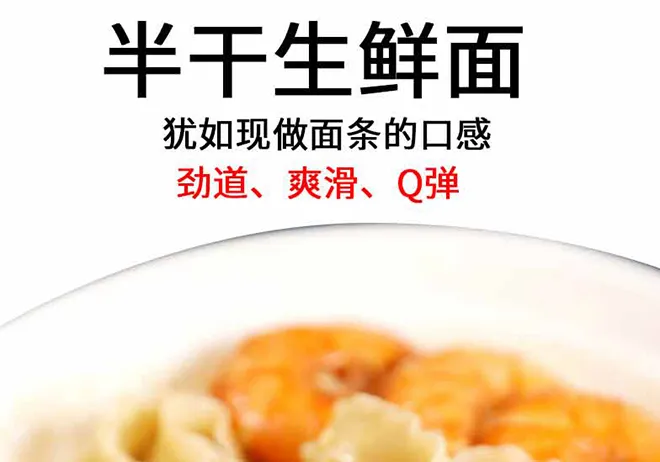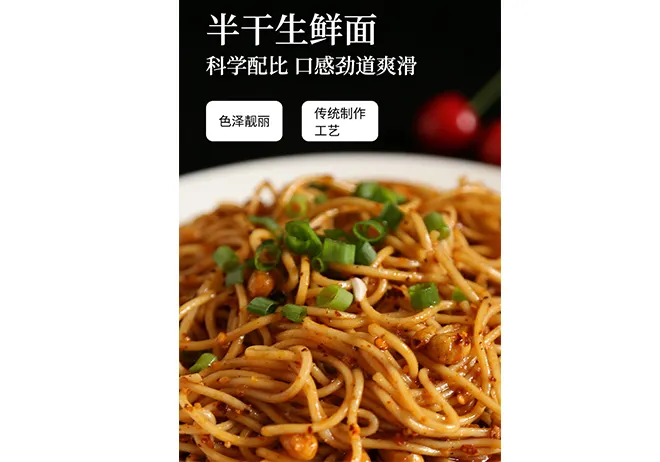Mar . 04, 2025 12:01
Back to list
Soba Udon Noodles
Japanese cuisine is renowned for its diversity and depth, and among the most popular staples are soba and udon noodles. Both noodles share a cultural significance and are often found in similar dishes, yet they differ in more ways than one might imagine. Understanding these differences can enrich your culinary adventures and deepen your appreciation for Japanese food culture.
Culturally, soba and udon are more than mere culinary delights; they are deeply integrated into Japanese tradition. Soba is particularly significant during New Year’s Eve celebrations, where it is served as toshikoshi soba, symbolizing the crossing from one year to the next, with its long strands representing long life and prosperity. Udon has its own cultural footprints, being associated with the Kagawa Prefecture, often referred to as the Udon Prefecture, which is renowned for its unique preparation styles and flavors. Nutritionally, while both soba and udon offer carbohydrates and energy, soba has a slight edge due to its buckwheat content, providing more protein, fiber, and essential minerals. This makes soba a favorable option for those seeking a nutritious meal without compromising on taste. Udon, while more calorie-dense, offers a substantial, filling meal that stands up well to rich toppings and sauces, perfect for those seeking comfort food. From an authoritative culinary perspective, choosing between soba and udon can depend on various factors including personal taste preferences, climate, and dietary needs. Soba, with its nutty flavor and versatile serving options, can be an excellent choice for summer dining or health-focused meals. Udon, with its satisfying chewiness and compatibility with hearty broths, caters to those seeking warmth and a hearty meal. In conclusion, while soba and udon may seem similar at first glance, they each offer unique experiences rooted deeply in Japanese culture and tradition. Whether it's the nutritional benefits of soba or the comforting texture of udon, understanding these differences allows for a more informed and enjoyable culinary experience. Savvy diners and culinary enthusiasts alike can appreciate the complex characteristics of each noodle, ensuring a richer, more authentic engagement with Japanese cuisine.


Culturally, soba and udon are more than mere culinary delights; they are deeply integrated into Japanese tradition. Soba is particularly significant during New Year’s Eve celebrations, where it is served as toshikoshi soba, symbolizing the crossing from one year to the next, with its long strands representing long life and prosperity. Udon has its own cultural footprints, being associated with the Kagawa Prefecture, often referred to as the Udon Prefecture, which is renowned for its unique preparation styles and flavors. Nutritionally, while both soba and udon offer carbohydrates and energy, soba has a slight edge due to its buckwheat content, providing more protein, fiber, and essential minerals. This makes soba a favorable option for those seeking a nutritious meal without compromising on taste. Udon, while more calorie-dense, offers a substantial, filling meal that stands up well to rich toppings and sauces, perfect for those seeking comfort food. From an authoritative culinary perspective, choosing between soba and udon can depend on various factors including personal taste preferences, climate, and dietary needs. Soba, with its nutty flavor and versatile serving options, can be an excellent choice for summer dining or health-focused meals. Udon, with its satisfying chewiness and compatibility with hearty broths, caters to those seeking warmth and a hearty meal. In conclusion, while soba and udon may seem similar at first glance, they each offer unique experiences rooted deeply in Japanese culture and tradition. Whether it's the nutritional benefits of soba or the comforting texture of udon, understanding these differences allows for a more informed and enjoyable culinary experience. Savvy diners and culinary enthusiasts alike can appreciate the complex characteristics of each noodle, ensuring a richer, more authentic engagement with Japanese cuisine.
Share
Next:
Latest news
-
Unleash Your Inner Chef with Delectable Italian Pasta CreationsNewsAug.01,2025
-
Savor Health and Flavor: Irresistible Soba Noodles for Sale Await!NewsAug.01,2025
-
Nourish Your Body with Premium Organic Ramen - A Culinary Delight AwaitsNewsAug.01,2025
-
Elevate Your Dishes with Our Exquisite Kinds of Egg NoodlesNewsAug.01,2025
-
Dive into Flavorful Convenience with Our Ramen OfferingsNewsAug.01,2025
-
Discover Exquisite Types of Naengmyeon and Chilled Soba NoodlesNewsAug.01,2025
-
Is Whole Wheat Pasta Healthy?NewsMay.30,2025
Browse qua the following product new the we

















































































































